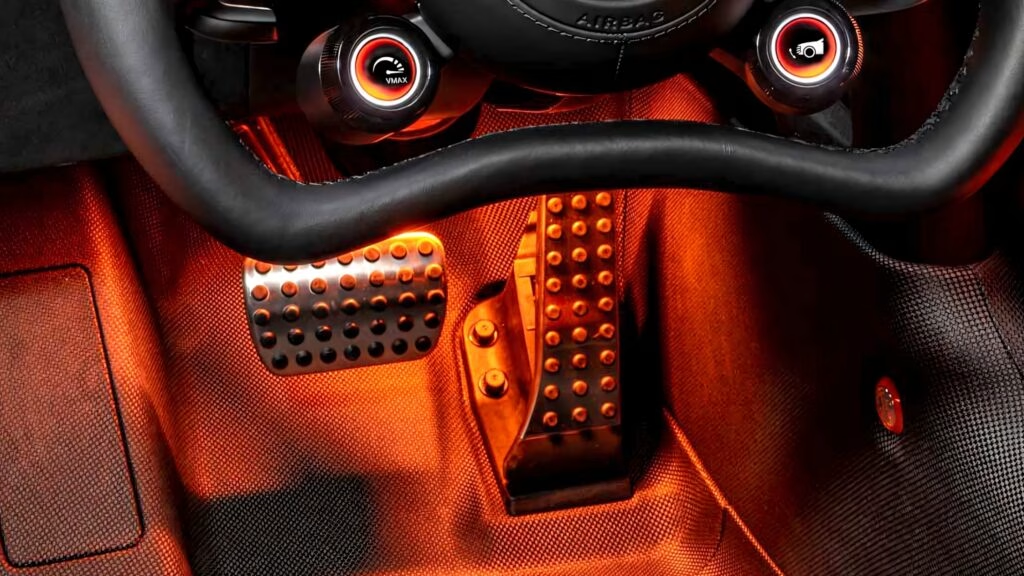Why Is China Changing the Rules on EV Braking?
If you’ve spent any time behind the wheel of an electric vehicle, you know regenerative braking is a hot topic. Some drivers swear by the “one-pedal” mode, where lifting your foot off the accelerator slows the car so much you rarely need to touch the brake. Others prefer a gentler approach, letting the car coast for efficiency. But China’s latest regulations are about to shake things up for everyone—especially fans of that strong regen feel.
China’s new national standard, GB 21670-2025, says automakers can’t let EVs default to a one-pedal driving mode that brings the car to a complete stop just by lifting off the accelerator. The feature isn’t banned outright, but you won’t be able to set it as the default. This is a big shift in a country that’s now the world’s largest EV market, and it’s got both drivers and manufacturers paying close attention.
What’s the Real Concern With One-Pedal Driving?
At first glance, one-pedal driving seems like a win-win. It’s smooth, it’s efficient, and it can even make city traffic less stressful. But safety experts in China—and increasingly, elsewhere—are worried about how much drivers rely on it.
Here’s the crux: When you get used to the car slowing itself so much, your foot spends less time hovering over the brake. In an emergency, that split-second delay in moving from the accelerator to the brake pedal can make a real difference. Studies cited by Chinese regulators show that drivers who always use strong regenerative braking tend to react more slowly when they actually need full stopping power. It’s a subtle risk, but one that becomes more serious as more people drive EVs.
Anecdotally, some drivers have reported near-misses when their car’s regen wasn’t enough to avoid a sudden obstacle. It’s easy to get lulled into a sense of security—until the unexpected happens. Volvo even issued a warning to thousands of owners last year, urging them to stop using one-pedal mode until a software fix was available, after reports of braking inconsistencies.
How Will These Changes Affect Everyday Driving?
For most drivers, the new rules won’t mean the end of regenerative braking altogether. You’ll still be able to use it—just not as the default mode that brings your car to a full stop. Automakers will likely offer adjustable regen settings, but you’ll need to actively select the strongest mode each time you drive, rather than having it always on.
This approach aims to keep drivers more engaged and aware of their braking habits. It’s a nudge toward safer, more attentive driving, especially in unpredictable traffic. And while some might grumble about losing the convenience of one-pedal mode, the tradeoff is a potential boost in road safety.
What Other Safety Features Are Being Added to Chinese EVs?
China isn’t stopping at regenerative braking. Starting in 2026, all new EVs sold in the country must come equipped with anti-lock braking systems (ABS). That’s a bit later than the US and Europe, where ABS has been mandatory for over a decade, but it’s a significant step forward for vehicle safety in China.
There’s also a new rule about brake lights: From 2025, EVs must illuminate their brake lights whenever regenerative deceleration exceeds 1.3 meters per second squared. Why does this matter? Because many EVs slow down so much during regen that drivers behind them might not realize the car is braking—until it’s too late. This change should make it clearer when an EV is slowing rapidly, helping to prevent rear-end collisions.
How Do These Changes Compare to Other Countries?
China’s move is part of a broader global debate about how to balance the benefits of EV technology with real-world safety. In the US and Europe, regulators have so far allowed automakers to offer strong one-pedal modes, but there’s growing scrutiny. Some manufacturers have already tweaked their regen settings or added clearer brake light signals in response to feedback.
The European New Car Assessment Programme (Euro NCAP) has begun factoring regenerative braking behavior into its safety ratings, and US agencies are studying the impact of one-pedal driving on accident rates. It wouldn’t be surprising to see similar rules pop up elsewhere if data continues to show safety concerns.
What Should EV Drivers Do Now?
If you’re driving an EV—especially in China—it’s worth getting familiar with your car’s regen settings. Try switching between modes and notice how your braking habits change. Practice moving your foot to the brake pedal quickly, even if you don’t need to stop. It’s a small adjustment, but it could make a big difference in an emergency.
For those outside China, keep an eye on how your car signals to drivers behind you during regen. If your brake lights don’t come on during strong deceleration, leave a little extra space and be mindful of traffic behind you. And don’t be surprised if your next EV comes with new safety features inspired by these Chinese regulations.
The big takeaway? EV safety isn’t about perfection—it’s about smarter adjustments. Start with one change this week, and you’ll likely spot the difference by month’s end.

